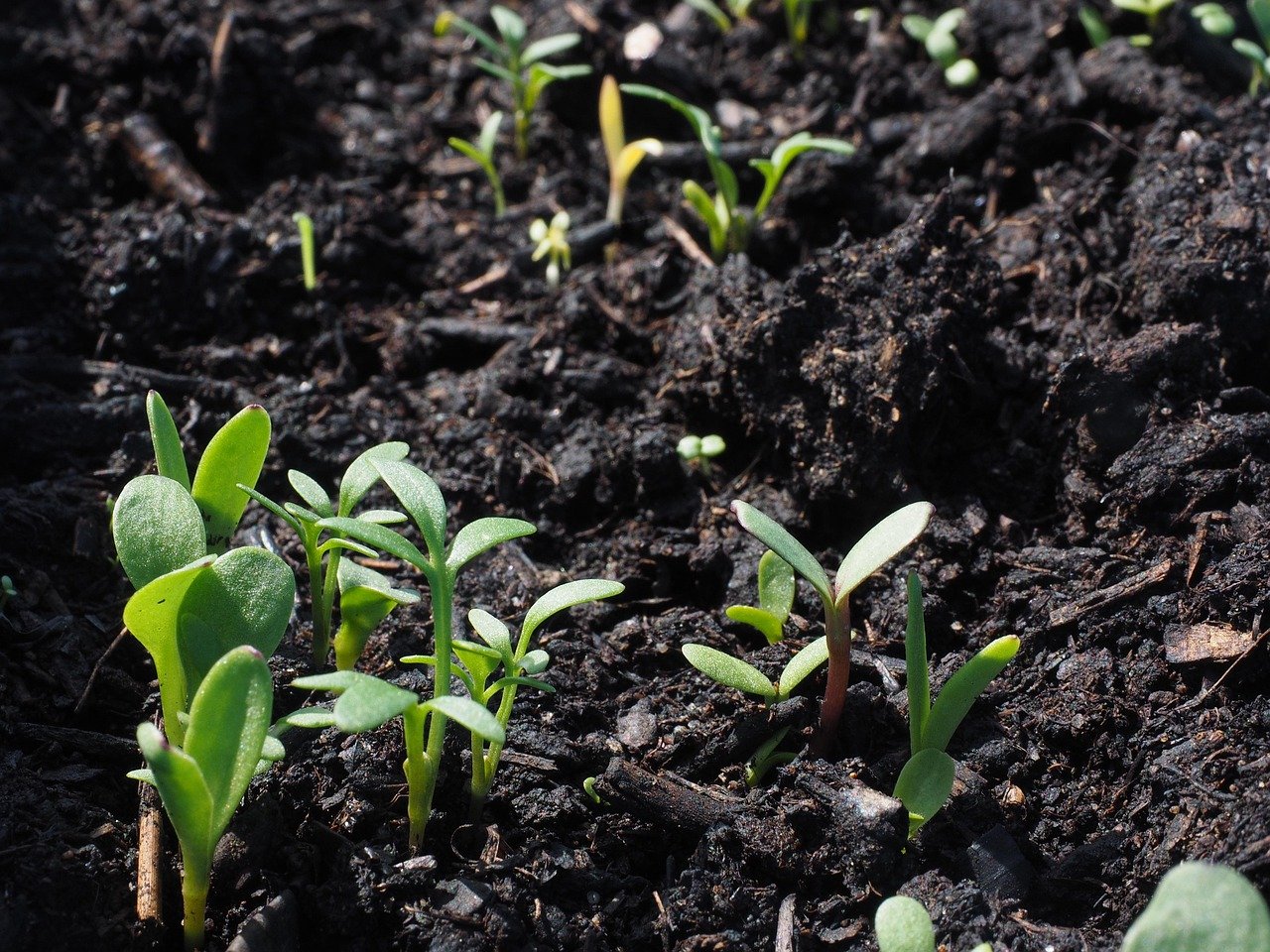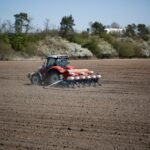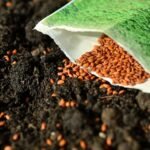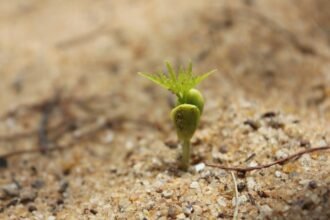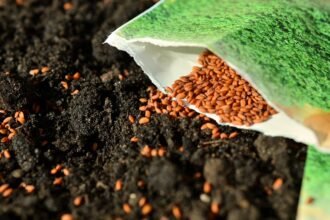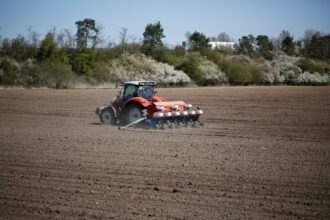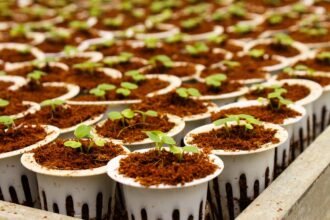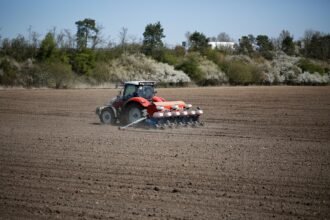Planting seeds is one of the most rewarding activities a gardener can engage in, but to ensure success, having the right tools is essential. The right equipment not only helps make the sowing process easier but also ensures that your seeds are planted at the correct depth, spaced properly, and provided with the right amount of moisture. From seed trays to watering cans, this guide will introduce you to the essential tools for seed sowing and planting.
1. Seed Trays and Flats
Seed trays and flats are essential for starting seeds indoors or in greenhouses. They are shallow containers with multiple compartments, providing the perfect space for seeds to sprout before being transplanted into the garden.
Why They’re Important:
- Organized Planting: Seed trays allow you to sow multiple varieties of seeds in an organized way, making it easier to manage your seedlings.
- Controlled Environment: Trays help maintain moisture levels and ensure the right temperature for seed germination.
- Easy Transplanting: Once the seeds have sprouted and grown strong enough, seed trays make it easier to transplant seedlings into larger pots or the garden.
Tip: Make sure your seed tray has drainage holes to prevent waterlogging, which can harm the delicate seedlings.
2. Seed-Starting Mix
While not a tool in the traditional sense, a good seed-starting mix is critical for seed sowing. It is different from regular garden soil because it’s designed to be lighter, sterile, and well-draining, giving your seeds the ideal environment for germination.
Why It’s Important:
- Nutrient-Rich: Seed-starting mixes contain the right balance of nutrients for seedlings to grow strong.
- Proper Drainage: It prevents the seeds from sitting in water, which can lead to rot.
- Sterility: Using a sterile mix minimizes the risk of diseases and pests that might affect your seedlings.
Tip: Always choose a mix specifically labeled as “seed-starting” or “germination mix” to ensure that it’s formulated for young plants.
3. Spades and Garden Trowels
When it comes to preparing the soil for seed sowing, a spade or garden trowel is indispensable. These tools allow you to dig, aerate, and break up soil to create the ideal seed bed.
Why They’re Important:
- Digging and Breaking Soil: Both a spade and a trowel are designed to break up compacted soil, ensuring that seeds can easily root.
- Planting Depth: A spade or trowel helps you measure and dig holes at the right depth for your seeds, which is essential for healthy germination.
- Soil Aeration: Aerating the soil ensures that oxygen reaches the roots, promoting better root development.
Tip: A garden trowel is smaller and more precise, while a spade is better for digging larger holes or breaking up compacted soil. Choose based on the scale of your planting area.
4. Watering Equipment
Watering is one of the most crucial steps in sowing seeds, and having the right watering equipment helps ensure that your seeds are provided with the right amount of moisture. Too much water can drown the seeds, while too little can dry them out.
Essential Watering Tools:
- Watering Can: A traditional watering can is ideal for small areas or containers. Look for one with a long spout and a fine rose (the part that dispenses the water) to gently water the seeds without disturbing them.
- Garden Hose with Spray Nozzle: For larger gardens or outdoor planting, a garden hose with an adjustable nozzle allows you to control the water pressure and direct the flow.
- Misting Bottle or Spray Bottle: For very delicate seeds, a fine misting bottle helps provide a gentle shower without disturbing the soil.
Why They’re Important:
- Proper Moisture Levels: Watering tools ensure that seeds are watered evenly and consistently, creating an optimal germination environment.
- Gentle Watering: Using a gentle spray or can with a fine rose prevents the force of the water from displacing seeds or compacting the soil.
Tip: Water seeds early in the morning or late in the afternoon to avoid evaporation and reduce the risk of fungal growth.
5. Plant Markers
Plant markers are a small but essential tool when sowing seeds. These markers help you keep track of what you’ve planted, which is especially useful if you’re sowing multiple types of seeds in one area.
Why They’re Important:
- Organization: Labels help you identify seedlings and track their progress. This is crucial for understanding how each plant grows, particularly when you’re transplanting or harvesting.
- Prevents Mistakes: If you’re starting multiple varieties of seeds, plant markers will ensure you don’t mix up different plant types.
Tip: Use waterproof markers or labels to ensure the text doesn’t fade when exposed to moisture.
6. Garden Fork or Soil Aerator
A garden fork or soil aerator is a helpful tool for loosening compacted soil before sowing seeds. It allows you to break up clumps and creates air pockets in the soil, which helps improve root growth and drainage.
Why It’s Important:
- Prepares Soil: Aerating the soil makes it easier for seeds to sprout and grow deep roots by creating a loose, well-draining environment.
- Improves Water Penetration: By loosening the soil, you help water penetrate deeper into the earth, reaching the roots.
Tip: Use a garden fork with sturdy, long tines for aerating larger areas. For smaller beds, a hand-held soil aerator is ideal.
7. Compost and Fertilizers
While seeds don’t require a lot of nutrients to germinate, once they begin to sprout and grow, they need nourishment to thrive. Compost and fertilizers provide the essential nutrients that seedlings need.
Why They’re Important:
- Nutrient Boost: Compost provides a slow-release supply of nutrients, while organic fertilizers can help supplement any deficiencies in the soil.
- Improves Soil Health: Both compost and fertilizers can improve the overall structure and fertility of the soil, ensuring long-term plant health.
Tip: Avoid using too much fertilizer when sowing seeds, as young plants can be easily burned by strong fertilizers. Instead, use a diluted organic fertilizer or compost for gentle feeding.
8. Cloche or Row Covers
For seedlings that are sensitive to temperature fluctuations or need extra protection, cloches or row covers are invaluable tools. They provide warmth, moisture retention, and protection from pests.
Why They’re Important:
- Temperature Regulation: Cloches or row covers create a mini greenhouse effect, which helps keep seedlings warm and encourages early growth.
- Protection from Pests: Covers protect seedlings from insects and animals that may otherwise damage or eat them.
Tip: For cool-season crops, use row covers to extend the growing season or to protect plants from frost.
9. Pruning Shears or Scissors
Once your seeds have sprouted and grown into young plants, pruning shears or scissors are essential for thinning seedlings and trimming any dead or damaged growth. Proper pruning ensures that plants have room to grow and aren’t competing for space or nutrients.
Why They’re Important:
- Healthy Growth: Pruning ensures that your plants focus their energy on healthy, strong growth rather than competing with weaker stems or overcrowding.
- Prevents Disease: Cutting away damaged or diseased parts of plants helps keep the rest of the plant healthy.
Tip: Use sharp pruning shears or scissors to avoid damaging the plants and make clean cuts.
Conclusion
Having the right tools for seed sowing is essential for creating a healthy, thriving garden. From seed trays and soil to watering cans and pruning shears, each tool plays a vital role in ensuring that your seeds grow into strong, healthy plants. With the right equipment, your gardening journey will be much more efficient, enjoyable, and successful. Whether you’re a beginner or an experienced gardener, these tools will help you get started and ensure that your seeds get the best possible start. Happy planting!

